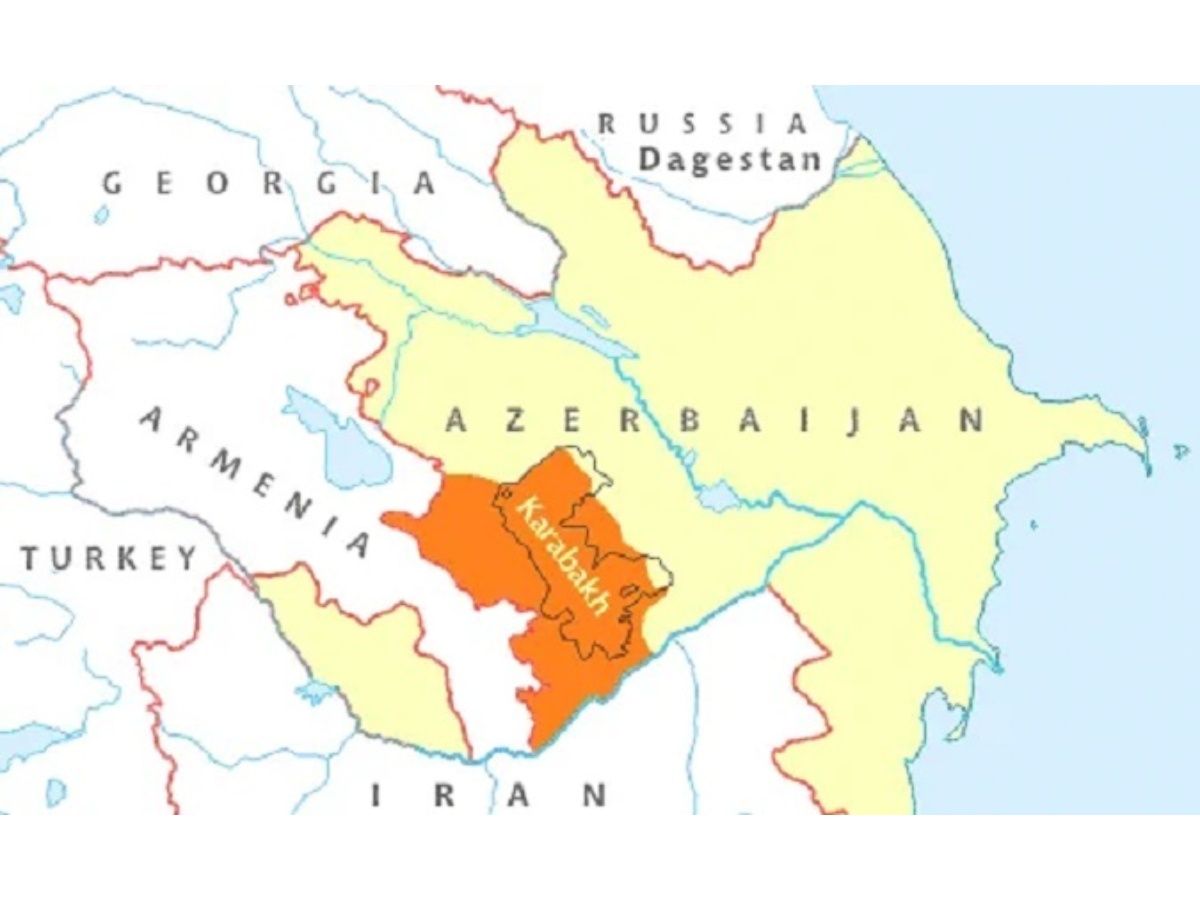
The Nagorno-Karabakh conflict, the oldest in the post-Soviet space, threatens a new military escalation in the South Caucasus after Azerbaijan launched an “anti-terrorist operation” in response to alleged provocations by Armenian armed forces.
RELATED:
Armenia And Azerbaijan Move To Normalize Bilateral Relations
Here are some key points about the territorial dispute that emerged between Armenia and Azerbaijan in the twilight of the USSR and has persisted for more than three decades.
THE BEGINNING OF THE CONFLICT
In 1988, during the “Perestroika” process, the predominantly Armenian-populated autonomous region of Azerbaijan announced its desire to break away from Azerbaijan and join Armenia.
Subsequently, the Parliament of the Armenian Soviet Socialist Republic approved the incorporation of the Nagorno-Karabakh territory in 1988, a step that never materialized as the central government of the USSR blocked that decision.
BREAKING:
Large scale fighting has just started in Nagorno-Karabakh.
Artillery and suicide drones are in action by both sides.
It’s possible that another war between Azerbaijan and Armenia is starting in front of our eyes. pic.twitter.com/xXC0Er8fCj
— Visegrád 24 (@visegrad24)
September 19, 2023
THE START OF LARGE-SCALE CONFLICTS
Nationalist tendencies in Azerbaijan and Armenia continued to grow, and in 1992, a brutal war erupted between the two emerging republics for control of Nagorno-Karabakh.
The armed confrontations lasted for three years and resulted in approximately 25,000 deaths. As a result, Azerbaijan lost control of Nagorno-Karabakh and seven adjacent districts, which were occupied by the Armenian side, considering them as a “security belt.”
During the war, in December 1991, a referendum was held in Karabakh, in which 99 percent of the population voted in favor of proclaiming the separatist territory as a republic.
However, the self-proclaimed republic of Nagorno-Karabakh has not been recognized by any member of the international community, including Armenia.
THE SIGNING OF THE CEASEFIRE
In 1994, a ceasefire was signed among the three parties to the conflict – Azerbaijan, Armenia, and Nagorno-Karabakh – in a ceremony that took place in the capital of Kyrgyzstan, Bishkek, under the auspices of Russia.
Simultaneously, the Organization for Security and Cooperation in Europe (OSCE) created the Minsk Group for the settlement of the Karabakh conflict, co-chaired by Russia, France, and the U.S. Despite the efforts of mediators, the warring parties failed to reach a compromise.
According to Armenia, one of the reasons was that Nagorno-Karabakh had been excluded from the negotiating process shortly after the ceasefire was signed.
Meanwhile, Azerbaijan insisted that the solution to the conflict necessarily involved the liberation of the occupied territories, a demand supported by several United Nations Security Council (UNSC) resolutions.
The war between Armenia and Azerbaijan has begun
-Azerbaijan launches ‘anti-terrorist activities’ in Nagorno-Karabakh, Defense Ministry says
-The ministry said they have informed the command of the Russian peacekeepers and the leadership of the monitoring center about the… pic.twitter.com/Is91I4iB9A
— Megatron (@Megatron_ron)
September 19, 2023
THE “FOUR-DAY WAR” OF 2016
After several years of relative calm on the frontlines, new clashes erupted in Nagorno-Karabakh in April 2016, reviving fears of a large-scale conflict, and became known as the “four-day war.”
During this escalation, at least three hundred people were killed on both sides, and several hundred were injured.
Between 2016 and 2020, clashes between the two countries began to occur not only in the Nagorno-Karabakh region but also on the state border between Armenia and Azerbaijan.
During these confrontations, which resulted in more than 20 deaths on both sides of the conflict, the parties used not only small arms but also heavy artillery and aviation.
THE 2020 WAR
The second Nagorno-Karabakh war began on September 27, 2020, with Azerbaijani bombings along the entire front and in Stepanakert (Jankendi, according to Azerbaijan), the capital of the enclave.
Azerbaijani forces managed to reclaim hundreds of villages in regions controlled by Armenia and took the city of Shusha, near Stepanakert.
The war, in which more than 2,800 Azerbaijani soldiers and 2,900 Armenian soldiers died, lasted until November 10 when it concluded thanks to the mediation efforts of Russia, which brought Azerbaijani President Ilham Aliyev and Armenian Prime Minister Nikol Pashinyan to the negotiating table.
As part of the agreement, Russia established a peacekeeping contingent to oversee the implementation of the agreements by both parties.
#NagornoKarabakh: scenes of panic in the streets of #Stepanakert. People run for cover as artillery strikes can be heard in the back. Children are experiencing some of the most terrifying moments of their lives. pic.twitter.com/yQVwxe0eXr
— Thomas van Linge (@ThomasVLinge)
September 19, 2023
THREE YEARS OF TENSIONS
Although the three-party agreement halted hostilities, tensions between both sides persisted, and negotiations for a peace agreement remained on paper. The Russian peacekeeping contingent repeatedly reported violations of the ceasefire in the area under its control.
These tensions were exacerbated by border attacks for which both sides blamed each other, resulting in the deaths of more than two hundred soldiers from both sides.
However, the primary source of tension was the blockade imposed in December 2022 by Azerbaijan on the Lachin corridor, which connects the Nagorno-Karabakh enclave with Armenia.
Azerbaijan claimed that Yerevan was using it to illegally extract Azerbaijani natural resources and supply arms to the self-proclaimed republic.
Armenia accused Azerbaijan of genocide, attempting to starve the Karabakh population or force them to leave their homes.
The Presidents of #Venezuela and #Azerbaijan met on Friday in order to assess the state of bilateral cooperation relations. Both presidents pointed out the need to expand cooperation relations pic.twitter.com/WtlkPSLfZn
— teleSUR English (@telesurenglish)
June 18, 2022



